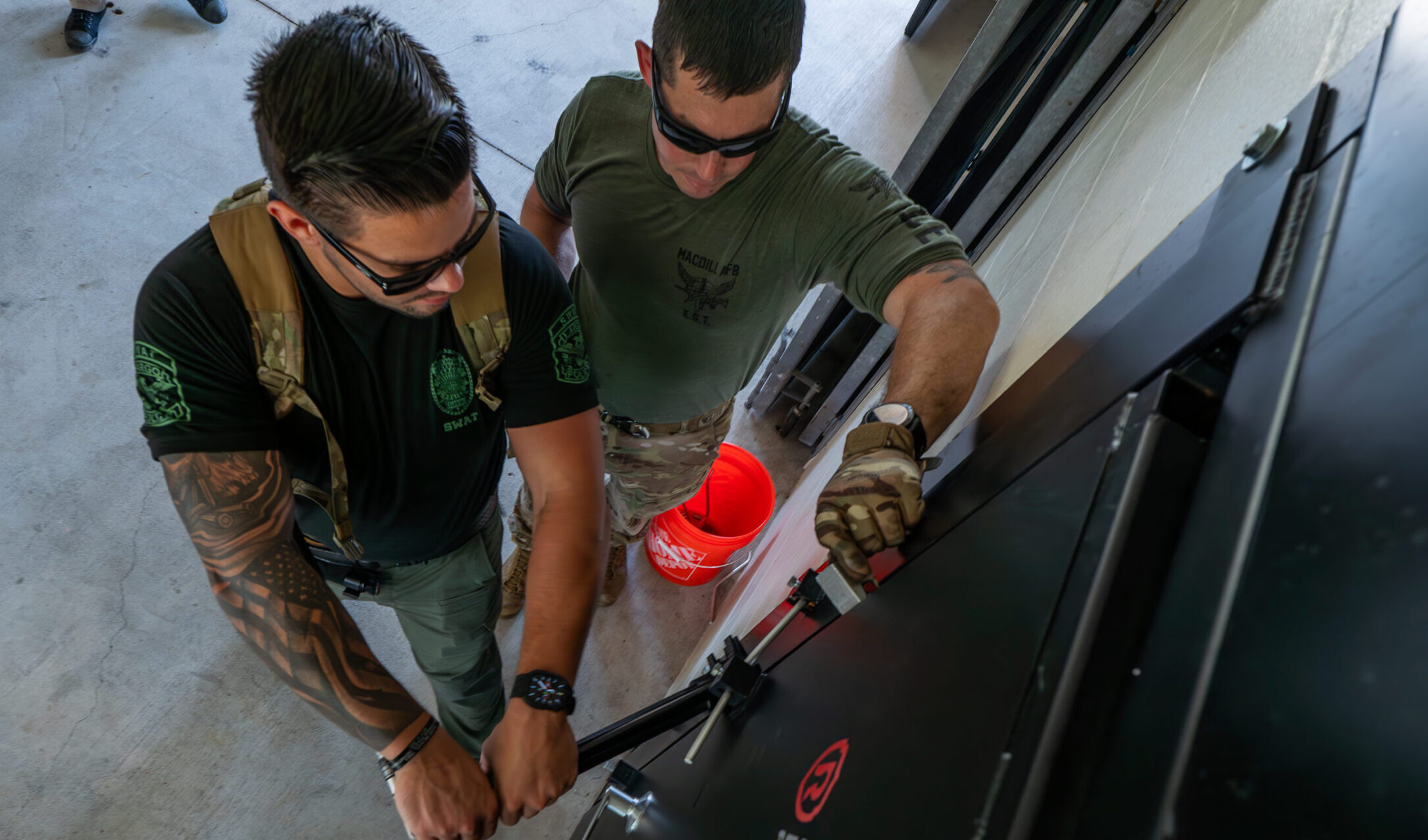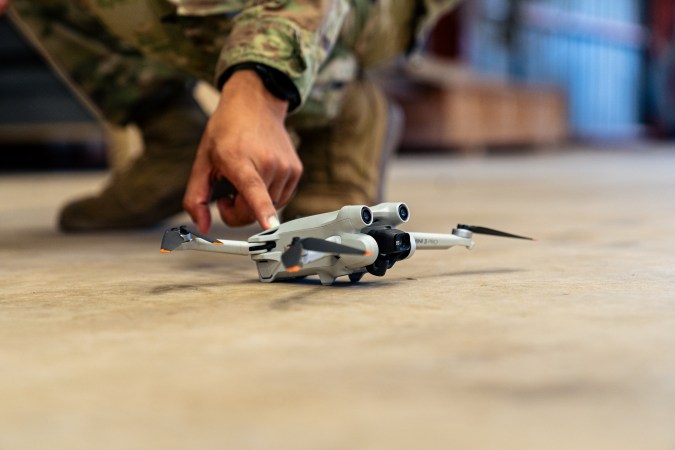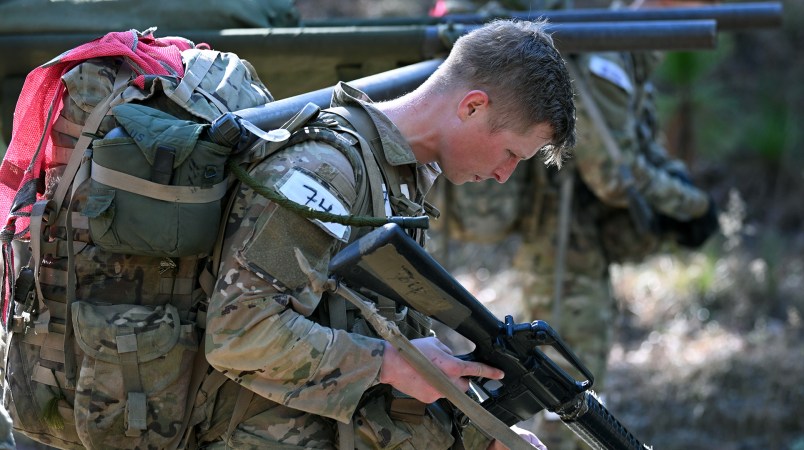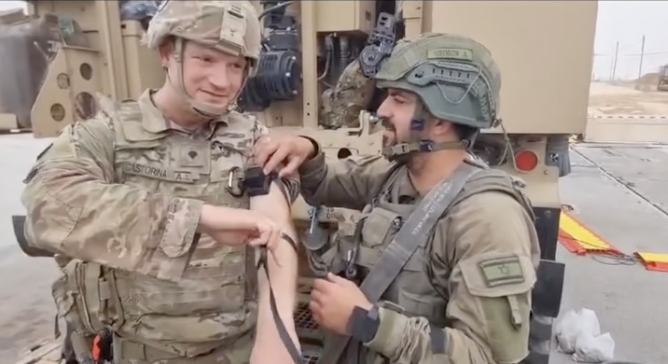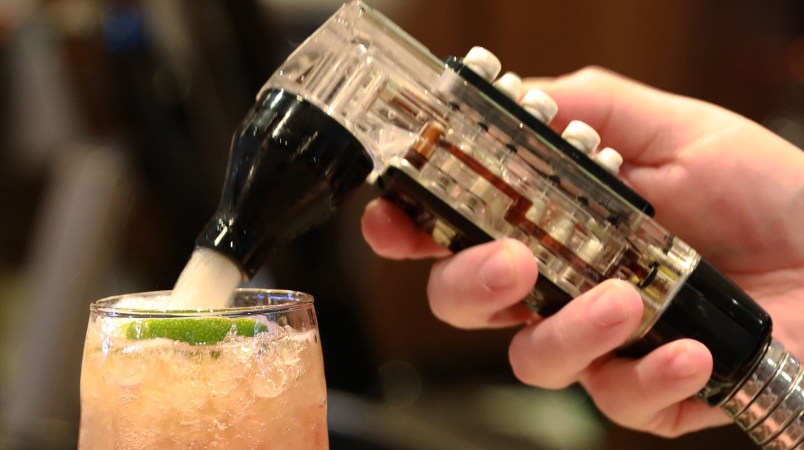An Air Force security team has developed a kit of portable hydraulic breaching tools that they say can break into some of the most secure rooms on most military bases: a Sensitive Compartmented Information Facilities, or ‘SCIF,’ the steel-and-concrete reinforced bunkers that store the military’s deepest secrets.
After five years of tinkering and practice, including building their own SCIF doors to practice on, a team with the 6th Security Forces Squadron at MacDill Air Force Base, Florida says they can now break into, or ‘breach,’ a SCIF in less than a minute, should a crisis arise inside one.
“Up to this point they had no fast, reliable way of getting into a SCIF if there is an emergency on the inside,” said Gordon Steltzer, owner and CEO of Rapid Assault Tools, who worked with 6th SFS officials to develop SCIF-worthy tools. “Without these tools, they were requiring about 45 minutes to get into a SCIF. We’re in within a minute.”
Airmen with the 6th SFS dedicate their own time to the project, and enlisted Air Force research and development officials to work with Steltzer’s company to create a backpack-portable hydraulic breaching system to take on SCIF doors “which were previously considered impenetrable,” according to Air Force officials.
SCIFs are used by officials with security clearances to process, store, and discuss classified information, including sensitive compartmented information. Because of the nature of the work done inside SCIFs, cell phones, computers and other technology are off limits when entering the room. They are also sound proof to keep discussion of classified information inside.
SCIF doors, walls and the locks that secure them resemble bank vaults or armories, and fall under a thick set of rules and specifications. Requirements for deadbolt and combination locks approved for SCIF use include passing a strength test of 600 lbs of force directly on the bolt followed by a second 200 lbs test without any damage, plus a direct-strike test of 600 lbs against the door it secures. A lock must also operate in temperatures as low as minus-10 degrees and as high as 158 degrees Fahrenheit. Finally, it must absorb five electric shocks of 250kV and still operate correctly.
But those requirements may have met its match in the MacDill team.
Lt. Jason Atkinson from the 6th Security Forces Squadron led the initiative to develop the SCIF breaching tool. The project came to fruition with Rapid Assault Tools which received a small business award from AFWERX, an Air Force office that contracts with the private sector to encourage innovative research, development and acquisition. The five-year-long project was unveiled at a breaching symposium at MacDill Air Force Base, Florida, last week with law enforcement agencies like the FBI and local police departments.
Subscribe to Task & Purpose today. Get the latest military news and culture in your inbox daily.
The tool is powered by a backpack with a battery, motor and pump bar. The hydraulic oil provides power to the tools while the battery provides power to an electric motor for energy, Steltzer said. The system, he said, can attack a SCIF door two ways.
Plan A is called “door pusher,” in which a tool pulls the door open using high force hydraulics to break the lock. According to the federal government’s technical security requirements for SCIFs, primary SCIF doors are equipped with General Services Administration-approved combination deadbolt locks and combination locks that have to meet federal standards. The doors may also have a “by-pass keyway for use in the event of an access control system failure.”
Plan B for the tool, which Stelzter said was the easier way to attack a door, is a “hinge puller” that pulls the hinges out so the opposite side of the door can be opened. According to federal specifications, the hinges of a SCIF door must have “hinge pins that are accessible from outside.”
“The easiest way to think about it, it’s like pulling teeth,” Steltzer said. “There’s a frame that is stationary and then there’s a claw that goes around the hinge and that pulls that out – sort of like pulling a tooth.”
The team went through several prototype tools before landing on their current design after numerous lab tests. They also built their own doors using DOD standards with metal gauges and layers of sheetrock to test the prototypes since SCIF doors can cost nearly $25,000 each.
“We found that there is one manufacturer that has the majority of market share and that’s what we ended up buying several SCIF doors in our lab and using those SCIF doors, we made quite a few prototypes and then we decided on the best avenue,” he said. “We did lab testing on SCIF doors and then decided which strategy was the best and then we perfected those two tools.”
While the breaching industry is pretty niche with typical customers being military or law enforcement, Stelzeer said he’s seen a rise in more civilian buyers in the last two to three years.
“We have seen a lot more focus on breaching in schools and commercial buildings and in government facilities,” Stelzer said. “Mostly because of active shooters.”
The latest on Task & Purpose
- F-15E pilot, in a jet called ‘Mullet,’ packs Zyn and kills drones
- 10th Mountain Division rolls more than 500 miles across Finland, Sweden and Norway
- Army eliminates online courses to stop ‘overwhelming’ soldiers
- It’s Military Working Dog official picture day
- Colorado soldier dies in training accident at Fort Johnson, Louisiana

